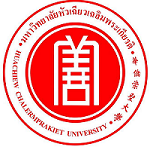Please use this identifier to cite or link to this item:
https://has.hcu.ac.th/jspui/handle/123456789/3663| Title: | Combinations of Lemongrass and Star Anise Essential Oils and Their Main Constituent: Synergistic Housefly Repellency and Safety against Non-Target Organisms |
| Authors: | Mayura Soonwera Jirisuda Sinthusiri Hataichanok Passara Tanapoom Moungthipmalai Cheepchanok Puwanard Sirawut Sittichok Kouhei Murata มยุรา สุนย์วีระ จิริสุดา สินธุศิริ หทัยชนก พัศระ ธนภูมิ ม่วงทิพย์มาลัย ชีพชนก ภูวนารถ ศิรวุฒิ สิทธิโชค King Mongkut’s Institute of Technology Ladkrabang. School of Agricultural Technology Huachiew Chalermprakiet University. Faculty of Public and Environmental Health King Mongkut’s Institute of Technology Ladkrabang. School of Agricultural Technology King Mongkut’s Institute of Technology Ladkrabang. School of Agricultural Technology King Mongkut’s Institute of Technology Ladkrabang. School of Agricultural Technology King Mongkut’s Institute of Technology Ladkrabang. School of Agricultural Technology Tokai University. School of Agriculture |
| Keywords: | Housefly แมลงวันบ้าน Lemongrass ตะไคร้ Essences and essential oils น้ำมันหอมระเหย Trans-anethole ทรานส์-อะนีโทล Star anise โป๊ยกั้ก จันทร์แปดกลีบ (พืช) Housefly repellent การไล่แมลงวันบ้าน |
| Issue Date: | 2024 |
| Citation: | Insects 2024, 15(3), 210 |
| Abstract: | The present study evaluated the housefly repellency of single-component formulations and combinations of lemongrass and star anise essential oils (EOs) and their main constituents. The efficacies of the combinations were compared against those of single-component formulations and DEET. Safety bioassays of all formulations and DEET on non-target species—guppy, molly, dwarf honeybee, and stingless bee—were conducted. GC–MS analysis showed that the main constituent of lemongrass EO was geranial (46.83%) and that of star anise EO was trans-anethole (92.88%). All combinations were highly synergistic compared to single-component formulations, with an increased repellent value (IR) of 34.6 to 51.2%. The greatest synergistic effect was achieved by 1.0% lemongrass EO + 1.0% trans-anethole combination, with an IR of 51.2%. The strongest, 100% repellent rate at 6 h was achieved by 1.0% geranial + 1.0% trans-anethole. They were twice as effective as DEET and caused obvious damage to housefly antennae under microscopic observation. All single-component formulations and combinations were benign to the four tested non-target species. In contrast, DEET was highly toxic to them. The synergistic repellency and biosafety of these two combinations are compellingly strong support for developing them into an effective green repellent. |
| URI: | https://has.hcu.ac.th/jspui/handle/123456789/3663 |
| Appears in Collections: | Public and Environmental Health - Articles Journals |
Files in This Item:
Items in DSpace are protected by copyright, with all rights reserved, unless otherwise indicated.
